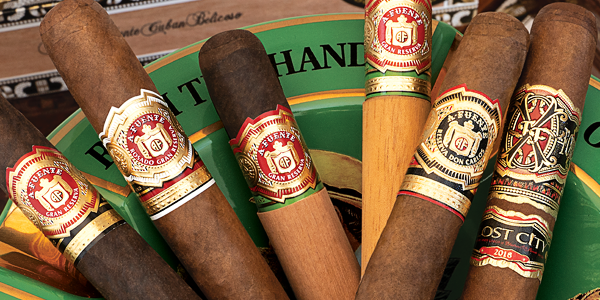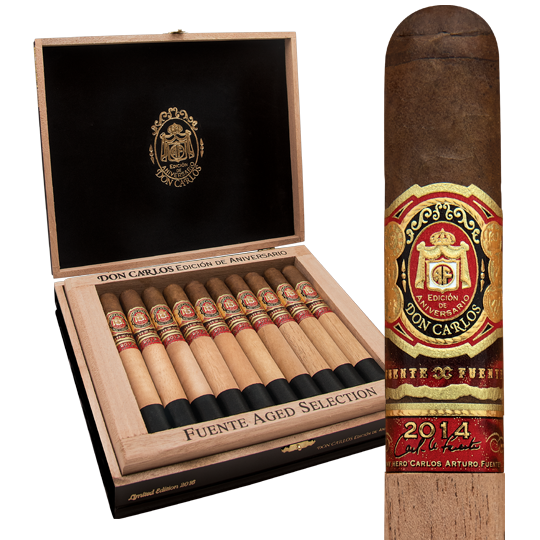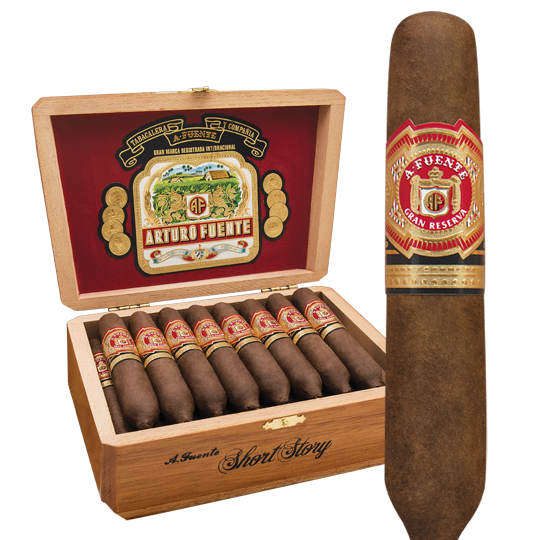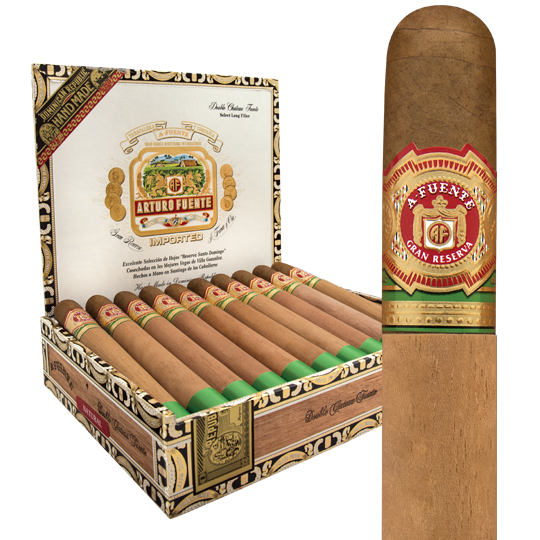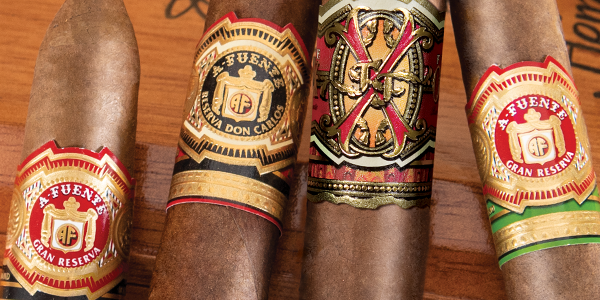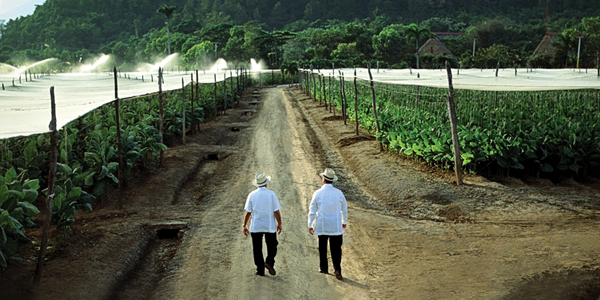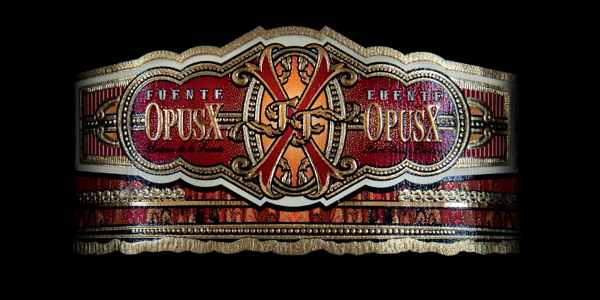History of Arturo Fuente Cigar Wrappers
Arturo Fuente and Company makes some of the best cigars in the world. The company has always been known as one that is innovative in using and blending, even creating, different tobaccos. And Arturo Fuente cigar wrappers are used on many different cigars. And Fuente makes a lot of cigars.
The Wrapper’s Importance
As a student of cigars, you know that the most important, and most expensive, component in your favorite smoke is the wrapper. Depending of the type of wrapper and the other tobaccos it envelops, the outer leaf can account for roughly up to 60 percent of the flavor of a cigar. The wrapper is also key in how a cigar looks and how a smoker perceives it. If you first eat with your eyes, then you likewise form your initial impression of a cigar by how it looks. Dig a little deeper and you understand that the wrapper performs a significant structural function. It holds the other tobacco -- the binder and filler -- in the cigar together. Still, some beautiful cigars can end up being plugged. Wrappers can unravel or tear if the rollers were not diligent. That’s not often the case with an Arturo Fuente cigar wrapper.
The Fuente Fuente Opus X
If there is any cigar in the world that is principally defined by the wrapper leaf, it’s the Fuente Fuente Opus X. The Opus X was formally introduced to the cigar world in 1995, but was years in the making. It is the first Dominican puro, meaning a cigar made entirely of tobacco from one country. The effort to create the Opus X was initially called “Project X from Planet 9.”
“It was a working title until I could think of a real name,” Carlito Fuente, the company’s president and a master blender, told Cigar Aficionado in 2015. “I was looking through the thesaurus and was thinking of using the word ‘opulent.’ Next to it in the dictionary I came across the word ‘opus.’ The definition was perfect. I combined that with the letter X and thought, ‘Opus X. It sounds like sex!' ”
The rest of the cigar industry was skeptical, to put it kindly, and predicted failure. But Carlito Fuente persisted, ultimately planting Corojo tobacco and growing it under shade. The result was a reddish-brown wrapper that, in the beginning, helped create a strong cigar. By today’s standards, the Opus X is considered more of a medium to medium-full strength smoke, depending on the vitola. That particular Arturo Fuente cigar wrapper, and the company’s stellar artisanship, has made Opus X one of the most famous, most sought-after cigars in the world, rivaled only by the Cuban Cohiba.
Always pushing the envelope, some of the special cigars Fuente makes, like the 20th Anniversary version of the Opus X, use a different leaf from the tobacco plant for its wrappers.
Cameroon
Cameroon, or the Republic of Cameroon, is a nation in Africa, on the west side of the continent. In the early 1900s, the French colonized it and introduced Sumatra-seed tobacco to the country and to neighboring Central African Republic. The result was a tobacco wrapper leaf called Cameroon. That wrapper is used by Fuente to make two very popular lines.
The Hemingway line is a series of cigars, mostly Figurados, that generally convey notes of toast, wood, tea, nuts, and caramel. The names of all the Hemingway cigars, like the Short Story and Best Seller, relate to literature. Cameroon wrapper is also used on the Don Carlos line of Fuente cigars. This is roughly the same blend as the Hemingway line, but aged considerably longer to deliver some oak along with spiciness, hints of nutmeg, cinnamon, and cocoa. That’s particularly true of the Don Carlos No. 2, a Pyramid that is one of my favorite cigars. If you want to splurge, get a hold of the Don Carlos Edicion de Aniversario (Anniversary Edition) for an even richer blend. This offers notes of coffee, cedar, almond, and figs with an overlay of spices.
The Cameroon wrapper in both lines gives the medium-bodied cigars (though the Don Carlos is a touch stronger) a hint of sweetness. Cameroon is known as a “toothy” wrapper leaf. That means that it’s not quite as smooth as, say, Connecticut Shade. The “toothiness” comes from tiny bumps on the wrapper, which are actually little pockets of oil. This may not sound terribly appealing, but it is a source of great flavor.
Connecticut Broadleaf Maduro
The Hemingway line is also available in a Connecticut Broadleaf Maduro wrapper. This dark covering shows off dark chocolate, earthiness, coffee, and spice. It has the sweetness that Maduro wrappers bring and the finish is rich and smooth. This wrapper is also on the Ashton Aged Maduro, made by Fuente.
Chateau Fuente Wrapper Buffet
Here’s where we depart from our format of talking about wrappers to explore a mix of Fuente cigars that carry three different wrappers. The common thread in the Chateau Fuente series is that the cigars are cloaked in cedar sleeves. They are offered in Natural, Maduro and Sun Grown wrappers. The Natural is a Connecticut Shade wrapper; the Maduro, a dark Connecticut Broadleaf; and the Sun Grown is a spicy representation of an Ecuador wrapper.
The Chateau Fuente Robusto, 4.5 x 50, about $6, for example, is available in all three wrappers. The Natural, or Connecticut Shade wrappers are light tan or golden-blond and generally add light notes of nuts, cedar, and toast. They are usually quite mild with moderate spice. The Maduro brings a slightly sweeter note. The Ecuador Sun Grown offers a little sweetness and what seems like a little more power to this typically medium-strength cigar.
Rosado
If you have not experienced a cigar with a Rosado wrapper, you’re missing out. “Rosado” means rose-colored. It’s also known as a Colorado Claro and was, until recently, not so common outside of Cuba. Indeed, the seeds of Rosado leaf tobacco come from Cuba and are now planted in some abundance in Ecuador. It brings great flavor to a cigar. The Fuentes use an Ecuador Rosado wrapper to temper the strength of the Magnum R line. The company says the wrapper has 10 years of age on it. What I know is that it’s quite tasty, providing flavor that does not detract from the fullness of the experience. It’s a very balanced cigar with a little sweetness and very smooth finish.
Another Note on Maduro
Fuente also uses a Connecticut Broadleaf Maduro specially aged in Cognac barrels to make its special Añejo line of cigars. This is a relatively full-flavored cigar and it’s also a very limited production that is not easy to find in stock. There’s a lot of everything in this cigar.
Candela
I have a friend who wants to smoke a cigar with a Candela wrapper. I recommended he give the Arturo Fuente Claro a try. Candela wrappers originated in Cuba as an alternative to stronger cigars. Candela is not anywhere near as popular today as it was in the 1940s, but the Fuentes make an 8-5-8 size (6 x 47; about $6.00) that is quite green in color and delivers flavors of grass and green tea. There’s a bit of a buttery sweetness.
Habano
Worth a mention is the wrapper used on the very special Destino al Siglo (A Century of Destiny). This cigar is made with a sun-grown Habano seed wrapper from Chateau de la Fuente rather than the Corojo used for the Opus X. This is a balanced, medium-full cigar with notes of cocoa, cashew, and cinnamon. There’s also some citrus and a sort of café con leche creaminess at the end.

